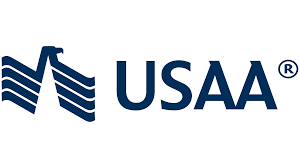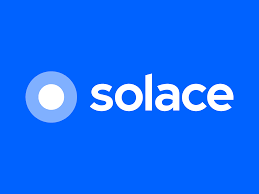Agency














Typical challenges and opportunities we support:
1. Global competition: Companies face increased competition from firms worldwide.
Supply chain disruptions: Fragility of traditional supply chain models highlighted by COVID-19 pandemic.
2. Cost control through automation: Improving efficiency and reducing labor costs.
Improved customer experience through data analytics and CRM: Better understanding and meeting customer needs.
3. Other areas:
Sustainability and environmental impact monitoring
Rapid product innovation through digital tools
What we do:
Digital transformation through strategy, technology, innovation, and design thinking, can help address these challenges and opportunities. Companies can improve efficiency, competitiveness, and overall performance by automating processes, improving supply chain visibility, reducing environmental impact, and accelerating product innovation while considering user experience and design.


Challenges:
Opportunities:



Typical challenges:
Omnichannel competition: Retail companies face competition from both brick-and-mortar and online retailers.
Supply chain disruptions: Fragility of traditional supply chain models highlighted by COVID-19 pandemic.
Typical opportunities:
Improved customer experience through data analytics and personalization: Better understanding and meeting customer needs.
Increased operational efficiency through automation: Improving productivity and reducing costs.
Others:
Sustainability and environmental impact monitoring
Rapid product innovation through digital tools
How we support:
Digital transformation through strategy, technology, innovation, and design-thinking can help address these challenges and opportunities. By improving customer experience, automating processes, improving supply chain visibility, reducing environmental impact, and accelerating product innovation while considering user experience and design, companies can increase efficiency, competitiveness, and overall performance in the retail industry.




Would you not want your customers to be happy like this customer with your services?
But we know it is not an easy journey.
Typical challenges:
Balancing growth and cost-cutting: Financial services companies must balance the need for growth and the need to control costs.
Regulatory compliance: Keeping up with constantly changing regulations can be a challenge.
Typical opportunities:
Improved customer experience through digital transformation: Better understanding and meeting customer needs while increasing growth potential.
Increased operational efficiency through automation: Improving productivity, reducing costs, and enabling growth.
Others:
Cybersecurity threats
Data privacy concerns
How we support:
Digital transformation through strategy, technology, innovation, and design-thinking can help address these challenges and opportunities. By improving the balance between growth and cost-cutting, automating compliance processes, improving customer experience through digital means, and increasing operational efficiency while considering user experience and design, companies in the financial services industry can increase their competitiveness and overall performance.




Typical challenges:
Limited resources and funding: Government organizations often operate with limited resources and funding.
Complex regulations and procedures: Navigating complex regulations and procedures can be a challenge.
Typical opportunities:
Improved service delivery through digital transformation: Enhancing service delivery and better serving citizens.
Increased operational efficiency through automation: Improving productivity and reducing costs.
Others:
Cybersecurity threats
Data privacy and security concerns
How we support:
Digital transformation through strategy, technology, innovation, and design-thinking can help address these challenges and opportunities. By improving service delivery through digital means, automating procedures and processes, improving data privacy and security, and increasing operational efficiency while considering the user experience and design, government organizations can increase their competitiveness and overall performance.


Typical challenges:
Aging infrastructure: Many utilities companies are faced with the challenge of upgrading aging infrastructure.
Increasing demand for sustainable energy sources: The increasing demand for renewable energy sources can be challenging for traditional utilities companies.
Typical opportunities:
Improved operational efficiency through digital transformation: Increasing efficiency through automation and digitalization.
Expansion into new energy markets: Developing new markets for renewable energy sources.
Others:
Competition
Regulation compliance
How we support:
Digital transformation through strategy, technology, and innovation, along with design-thinking, can help address these challenges and opportunities. By improving operational efficiency through digital means, expanding into new energy markets, automating compliance processes and considering the user experience and design, utilities companies can increase their competitiveness and overall performance.



Typical challenges:
Rapid technological advancements: Keeping up with rapidly changing technology can be a challenge for companies in the communications, media and technology industry.
Competition: Staying ahead of the competition can be difficult in a rapidly changing and highly competitive market.
Typical opportunities:
Expansion into new markets: The rapid pace of technological change is creating new markets and opportunities.
Increased efficiency through digital transformation: Improving productivity and reducing costs through automation and digitalization.
Others:
Regulation compliance
Intellectual property concerns
How we support:
Digital transformation through strategy, technology, and innovation, along with design-thinking, can help address these challenges and opportunities. By expanding into new markets, improving operational efficiency through digital means, automating compliance processes and considering the user experience and design, companies in the communications, media and technology industry can increase their competitiveness and overall performance.




Typical challenges:
Rapidly changing consumer behavior: The travel and hospitality industry must constantly adapt to changing consumer preferences and behaviors.
Cost management: Controlling costs while still providing high-quality services is a challenge.
Typical opportunities:
Improved customer experience through digital transformation: Enhancing the customer experience through personalized offerings and increased convenience.
Increased operational efficiency through automation: Improving productivity and reducing costs.
Others:
Competition
Seasonality
How we support:
Digital transformation through strategy, technology, and innovation, along with design-thinking, can help address these challenges and opportunities. By improving the customer experience through digital means, automating processes and procedures, improving operational efficiency while considering the user experience and design, and finding new ways to compete, the travel and hospitality industry can increase their competitiveness and overall performance.
Typical challenges:
Limited resources: Small to medium businesses often have limited resources, including funding and manpower.
Competition: Competing with larger, established businesses can be challenging for smaller firms.
Typical opportunities:
Increased efficiency through digital transformation: Improving productivity and reducing costs through automation and digitalization.
Improved customer engagement through digital channels: Enhancing customer relationships and increasing loyalty through digital engagement.
Others:
Managing growth
Regulation compliance
How we support:
Digital transformation through strategy, technology, and innovation, along with design-thinking, can help address these challenges and opportunities. By improving operational efficiency through digital means, enhancing customer engagement and improving customer experience, automating compliance processes and considering the user experience and design, small to medium businesses can increase their competitiveness and overall performance.

Typical challenges:
Funding: Acquiring sufficient funding can be challenging for start-ups.
Competition: Competing with established businesses can be difficult for start-ups in a rapidly changing market.
Typical opportunities:
Disrupting established markets: Start-ups often have the potential to disrupt established markets and create new opportunities.
Improved efficiency through digital transformation: Improving productivity and reducing costs through automation and digitalization.
Others:
Scalability
Regulation compliance
How we support:
Digital transformation through strategy, technology, and innovation, along with design-thinking, can help address these challenges and opportunities. By improving operational efficiency through digital means, disrupting established markets, automating compliance processes and considering the user experience and design, start-ups can increase their competitiveness and overall performance.
Typical challenges for small service agencies include:
Lack of resources: Smaller service agencies often have limited resources compared to larger competitors, making it challenging to invest in new technology, training, and marketing efforts.
Competition from larger companies: Smaller service agencies often face competition from well-established and better-funded larger companies.
Difficulty in building brand recognition: Smaller service agencies may struggle to establish a strong brand and build recognition in a crowded marketplace.
Typical opportunities for small service agencies include:
Growing demand for specialized services: As clients become more discerning and seek out specialized services, smaller service agencies have the opportunity to establish themselves as experts in their niche.
Increased use of technology: The increasing use of technology in service industries can provide opportunities for small service agencies to streamline their internal processes and offer innovative solutions to clients.
To position for success, small service agencies can focus on:
Niche specialization: By identifying a specific niche or area of expertise, small service agencies can differentiate themselves from larger competitors and become recognized for their expertise.
Building a strong brand: Small service agencies can build a strong brand by consistently delivering high-quality work and effectively communicating their value proposition to potential clients.
Building strategic partnerships: Small service agencies can build strategic partnerships with larger companies, complementing their services and gaining access to new clients and markets.
Adopting technology-driven solutions: Small service agencies can adopt digital solutions to improve their internal processes and increase efficiency, providing cost-effective solutions to clients and helping them stay competitive.
Investing in people: Small service agencies can invest in their people, providing them with the training and resources they need to deliver high-quality work and stay ahead of industry advancements.
By focusing on these key areas, small service agencies can position themselves for success and compete effectively against larger companies. Additionally, incorporating design-thinking into their approach can help them differentiate themselves, bring a fresh perspective, and enhance the user experience for their clients.